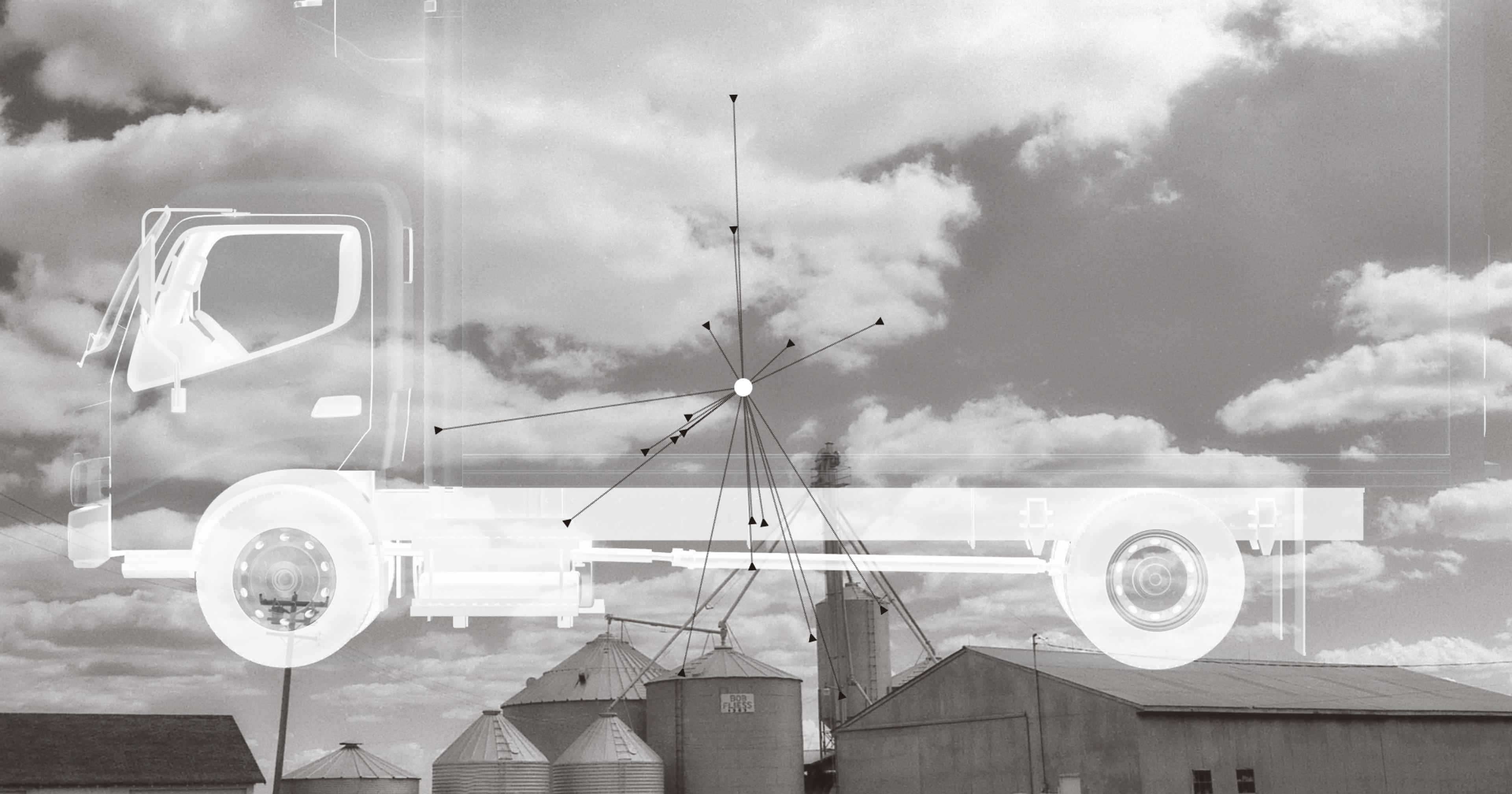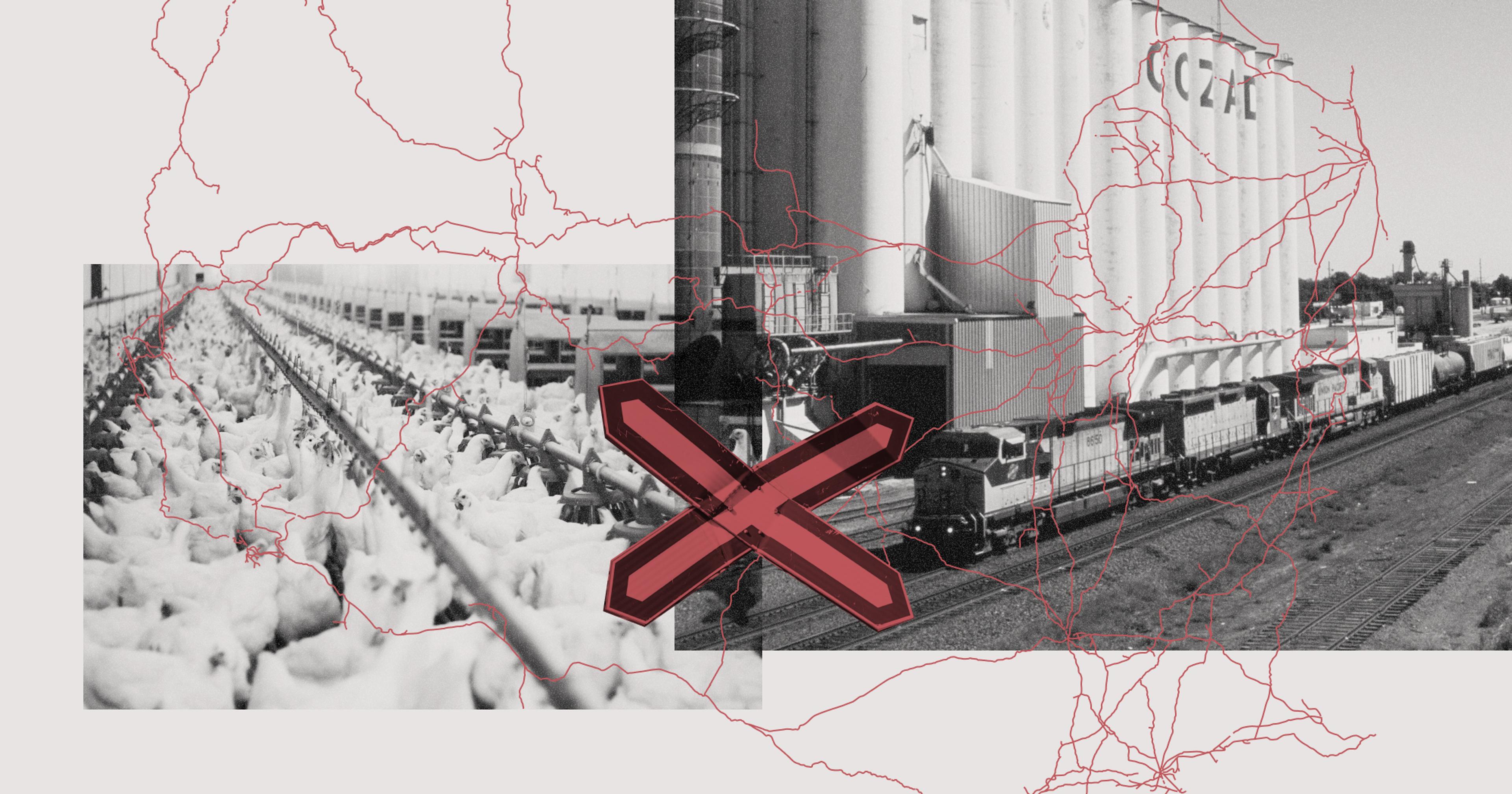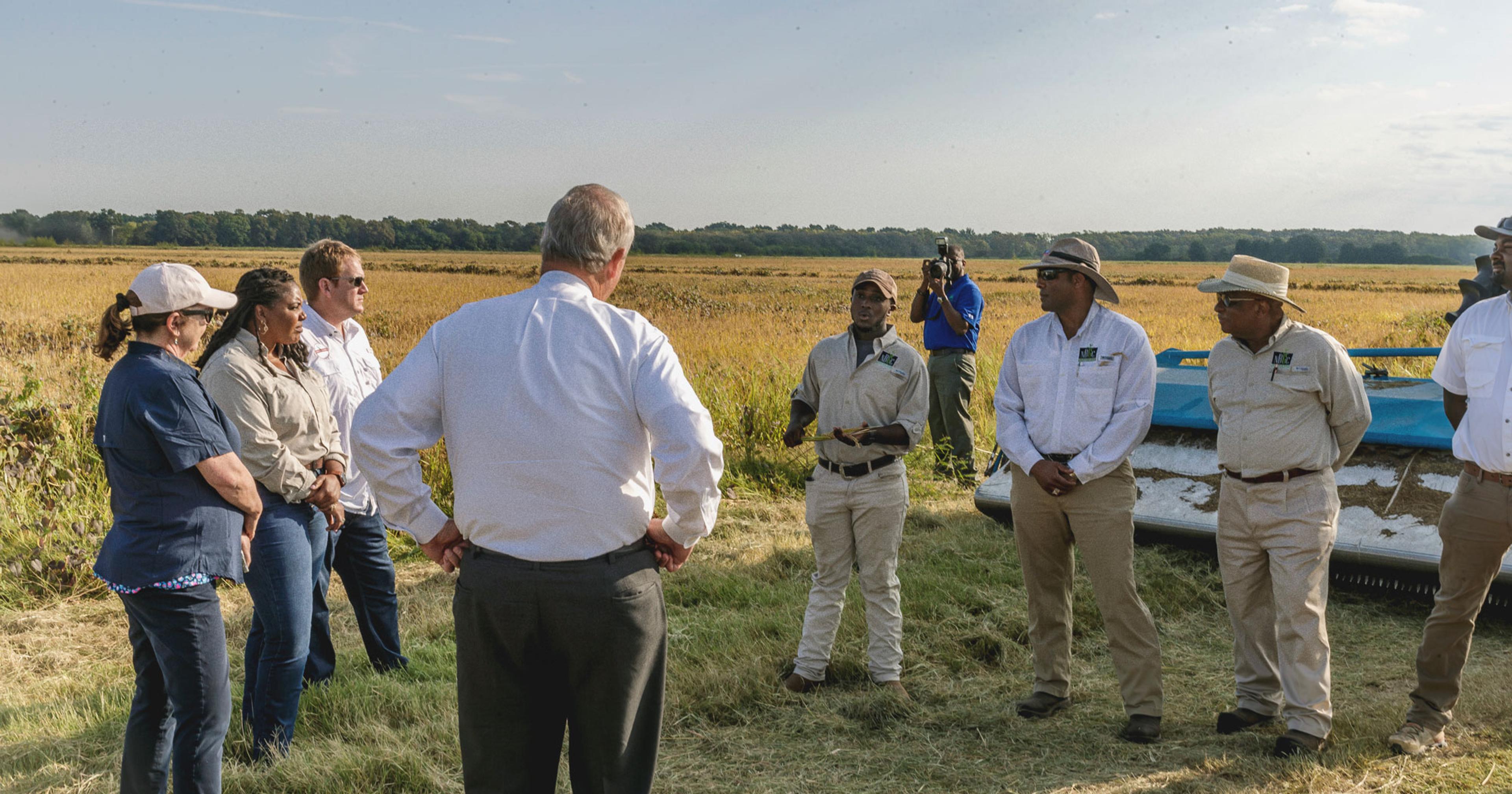Proposed Federal Motor Carrier Safety Administration (FMCSA) legislation looks to slow down America’s trucking fleets — farm groups are pushing back.
Lewie Pugh began his trucking career in the U.S. Army Reserve in 1992. Stepping fresh off his family farm where he had raised cattle and sheep and packed square bale hay, he would go on to drive more than 2.5 million safe, accident-free miles behind the wheel of commercial trucks.
For Pugh, trucking and farming were flip sides of the same coin. Long hours, arduous working conditions, and merciless weather were just part of the job. “Interstate highway to a trucker is like land is to a farmer,” he said. “That’s what we make our living off of.”
It’s no secret that trucking and agriculture are deeply intertwined. Commercial trucks deliver seeds, fertilizer, livestock, and machinery. They are responsible for moving products from farm to market, field to slaughter, and connecting farms to their increasingly widespread customers. On any given day, an estimated 13.5 million trucks can be found coming and going across American highways. Flatbeds, semi-trailers, step decks, dry vans, and more move some 70 percent of the nation’s freight every year.
Any disruptions to the trucking supply chain can have a significant impact on farmers’ bottom lines. In 2021, the National Milk Producers Federation (NMPF) estimated supply chain disruptions cost American dairy exporters nearly $1 billion in the first half of the year.
Now, new legislation from the Federal Motor Carrier Safety Administration (FMCSA) is looking to impose speed-limiting mandates on commercial trucks, in an effort to reduce large truck crash fatalities — which killed 5,398 people in 2022, and injured another 76,298. Opponents like Pugh, the American Farm Bureau Federation, and the Livestock Marketing Association, say slowing trucks down won’t bring the safety gains FMCSA promises, and will further hurt the supply chain, which could have disastrous economic effects on American farmers.
“It slows everything down,” said Pugh, who now works as the executive vice president of the Owner-Operator Independent Drivers Association (OOIDA). “Around planting time you have a very small window to get stuff in the ground … you’re fighting rain and mud, you need your seeds on time.” He continued, “Same thing with livestock. Cows can’t be on [the trucks] forever. You need to feed them, water them, and take care of them.” Truckers already face tight, often unrealistic delivery timelines and are paid by the mile, meaning any stops refueling, feeding livestock, or even bathroom breaks go unpaid.
This isn’t the first time trucking regulations have sent farming organizations spinning. Last year, when the California Air and Resource Board’s (CARB) Advanced Clean Fleet Regulation was introduced, which aimed to transition California’s medium to heavy-duty trucks to zero-emission, fully-electric vehicles, dozens of agricultural organizations voiced concerns. Still, the regulation was passed this spring.
Central to the FMCSA’s proposed legislation is the use of electronic engine control units (ECUs) in commercial trucks, which limit their maximum speed. The agency says these devices already exist in most commercial motor vehicles manufactured since 2003, though many carriers opt not to use them. Speed-limiting devices have been mandatory in Europe since 2002, restricting speeds to around 55 to 60 miles per hour (mph).
“Around planting time you have a very small window to get stuff in the ground … you’re fighting rain and mud, you need your seeds on time.”
Many commercial trucks are also now equipped with advanced safety features such as blind spot detection systems and advanced driver assistance systems (ADAS). Though, again, use is determined by individual carriers. Earlier this year, the Biden administration proposed a rule mandating automatic emergency braking for all commercial vehicles over 10,000 pounds.
Safety is the primary driver behind implementing these devices, with the FMCSA reporting that 20 percent of fatal crashes occur at speeds between 70 and 85 mph. Between 2020 and 2021, there was a more than 18 percent increase in fatal crashes involving large trucks. In the last 10 years, large truck crash fatalities have increased by more than 50 percent.
“When large trucks don’t travel at high rates of speed, they are involved in fewer crashes, and the crashes that do happen are less serious — less death, less injury,” said Zach Cahalan, who heads up the Truck Safety Coalition, a victim’s rights group advocating for survivors of large truck crashes.
Cahalan laughed when asked about how speed-limiting devices might impact America’s farming supply chain. “You tell me, how much time do you shave off whether you’re driving 65 or 70? The difference is marginal.” He added that faster speeds also use more fuel, which means more time lost stopping to refuel. “I have to think any marginal gains you have by going 5 miles per hour faster are offset by the fuel lost,” he said.
For Cahalan, truck crashes are a public health crisis, as well as a labor crisis. “If you’re paid by the mile, when you’re not moving it creates a perverse incentive for drivers to make up for that lost time,” he said. Improving working conditions and compensating drivers for time spent at loading docks or pulling over during bad weather is another piece of the road safety puzzle. “These folks are trying to make a living, they should be treated with dignity and paid well for the service they provide,” he added.
According to various research, high-severity large-truck crashes can be attributed to a range of issues, including driver distraction, alcohol use, and emotional factors like risky passing maneuvers. Another study found defective brakes, lights, and general maintenance issues, alongside driver error, increased crash rates by nearly double. With so many factors at play, opponents like Pugh argue that speed-limiting devices don’t see the whole picture.
“If you’re paid by the mile, when you’re not moving it creates a perverse incentive for drivers to make up for that lost time.”
A small number of U.S. lawmakers have introduced legislation to prohibit the FMCSA’s decision, citing economic disruption and government overreach. The DRIVE Act in the House has won 30 cosponsors, while the Senate’s bill S2671 has nine. Central to their argument is that speed limits should be left up to individual states to set.
“Montana truckers play an essential role in the Treasure State’s economy, and ensuring they stay safe on the job is one of my top priorities,” said Senator Steve Daines (R-Montana), one of the bill’s sponsors, in a public statement. “Overreaching, out-of-touch D.C. mandates oftentimes make truckers’ jobs harder and can even put their lives at risk. I’ll keep fighting for Montana truckers and against big government.”
FMCSA agreed to provide a written statement for this article. At the time of publication, no statement has been received.
Relationships between farmers and truckers are already under strain, as prices for commercial transport have climbed in recent years. Some farmers have opted to start their own transportation companies, even setting up cooperatives to take back power in shipping.
Truckers like Pugh feel speed-limiting mandates could make matters worse, citing increased operational costs, highway congestion, which leads to longer transit times, and ultimately increased costs on consumer products — all of which are bad for farmers. Still, he understands the victim’s argument, noting, “People have lost family members, and my heart grieves for them.”
Today, Pugh’s gone back to his roots, operating a small farm in Holden, Missouri. “I have some feeder pigs, a couple of goats, and a collie dog,” he said. “It’s more of a hobby farm. My brain-drain farm, I call it.”
He no longer drives commercially, though he stays active in industry discussions through OOIDA. Despite disagreements on the speed-limiting mandate, Pugh believes truckers, farmers, and government agencies share a common goal — ensuring America’s goods move safely and efficiently. He stated, proudly, “No one in this world cares more about highway safety than the American truck driver does.”










